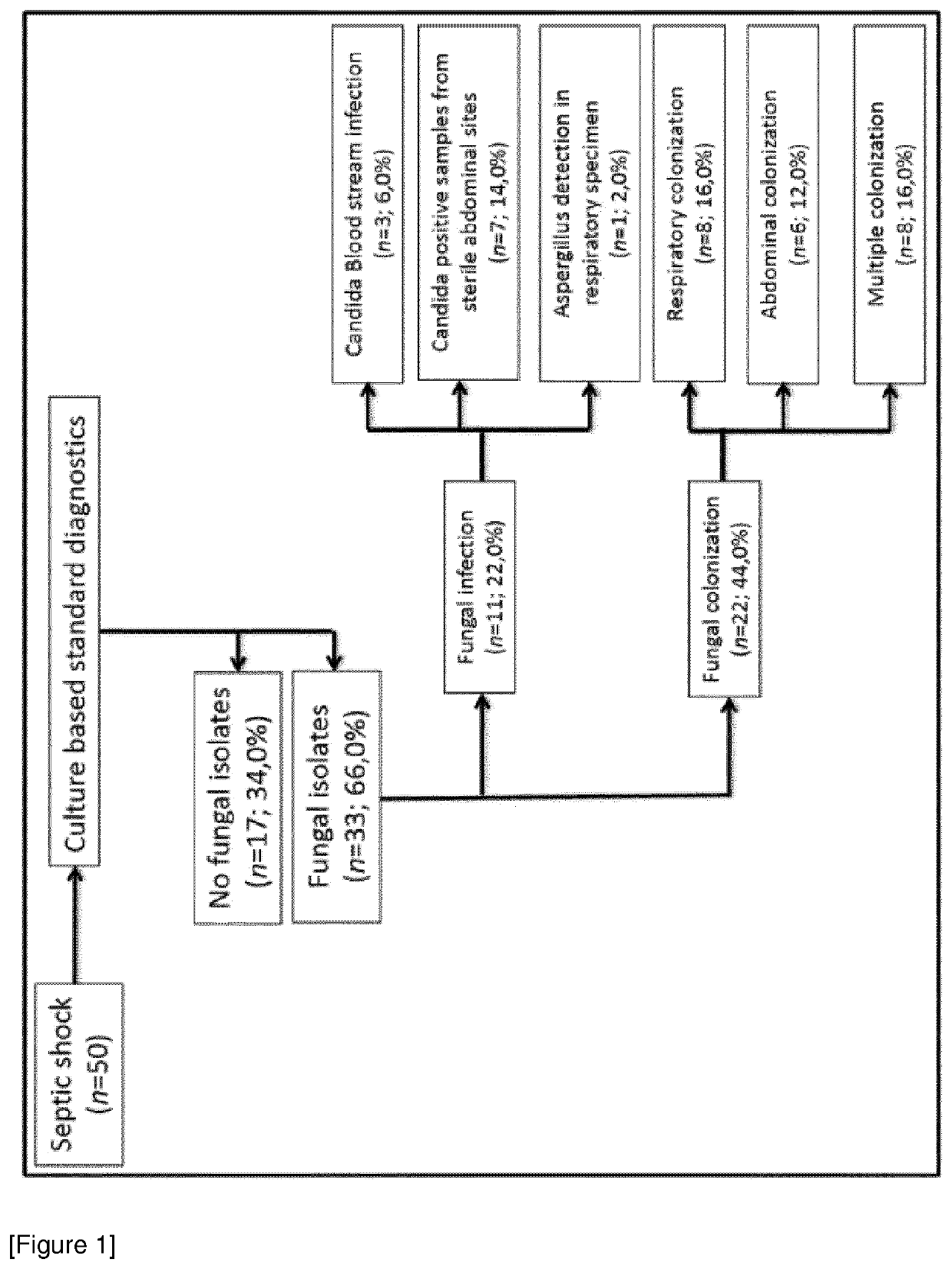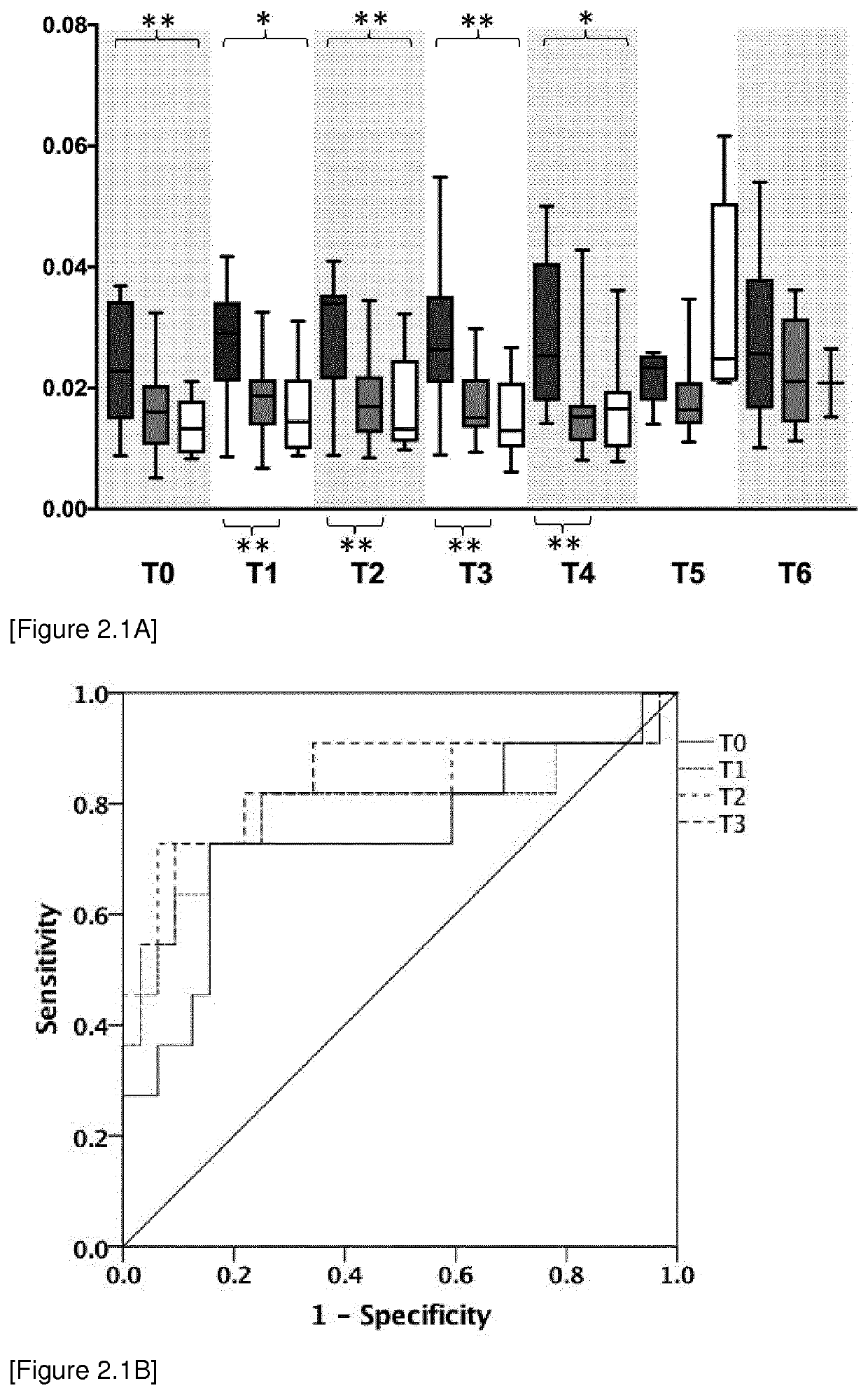Biomarkers for the diagnosis of invasive fungal infections
a technology for invasive fungal infections and biomarkers, which is applied in the direction of disease diagnosis, instruments, biological material analysis, etc., can solve the problems of lack of accuracy, alarming mortality rate of invasive fungal infections (ifi), and negative consequences regarding outcome and mortality risk
- Summary
- Abstract
- Description
- Claims
- Application Information
AI Technical Summary
Benefits of technology
Problems solved by technology
Method used
Image
Examples
example 1
e Context of Sepsis, Especially Patients with Septic Shock
[0420]Study design: The observational clinical study was approved by the local ethics committee (Ethics Committee of the Medical Faculty of Heidelberg, Trial Code No. S-097 / 2013 / German Clinical Trials Register: DRKS00005463) and was conducted in the surgical intensive care unit of Heidelberg University Hospital, Germany between November 2013 and January 2015. All study patients or their legal designees gave written informed consent. In total 50 patients suffering from septic shock according to the criteria of the Surviving Sepsis Campaign: International Guidelines for Management of Severe Sepsis and Septic Shock 2012 were enrolled in this study (Dellinger et al. Crit Care Med. 2012 41:580-637; Romani. Nat Rev Immunol. 2004 4:1-23); Schroeder M et al. Crit Care. 2016 20:139; Zedek D C et al. J Clin Microbiol. 2006 44:1601).
[0421]Blood sample were collected at sepsis onset (T0) and 1 day (T1), 2 days (T2), 7 days (T3) 14 days (...
example 2
e Context of Liver Transplantation, Especially Patients Following Liver Transplantation
[0536]The following experiments were performed as described in Example 1. In brief, plasma concentrations of ICAM1, MR-proADM or ICAM1 and MR-proADM were measured in patients following liver transplantation (LTX) with an invasive fungal infection, a fungal colonization or without any fungal findings. In total, 93 patients following LTX were screened for the emergence of IFIs by the use of culture-based as well as image-producing procedures. In parallel, plasma samples were collected on day of liver transplantation (T0), and 1 day (T1), 2 days (T2), 7 days (T3), 14 days (T4), 21 days (T5) and 28 days (T6) afterwards.
[0537]2.1 ICAM1 for the detection of an invasive fungal infection following liver transplantation
TABLE 39Area under the curve (AUC), sensitivity,1-specificity and best cut-off from receiveroperating characteristic (ROC) analysis withICAM1 in all participating patients on day ofliver tra...
PUM
 Login to View More
Login to View More Abstract
Description
Claims
Application Information
 Login to View More
Login to View More - R&D
- Intellectual Property
- Life Sciences
- Materials
- Tech Scout
- Unparalleled Data Quality
- Higher Quality Content
- 60% Fewer Hallucinations
Browse by: Latest US Patents, China's latest patents, Technical Efficacy Thesaurus, Application Domain, Technology Topic, Popular Technical Reports.
© 2025 PatSnap. All rights reserved.Legal|Privacy policy|Modern Slavery Act Transparency Statement|Sitemap|About US| Contact US: help@patsnap.com



